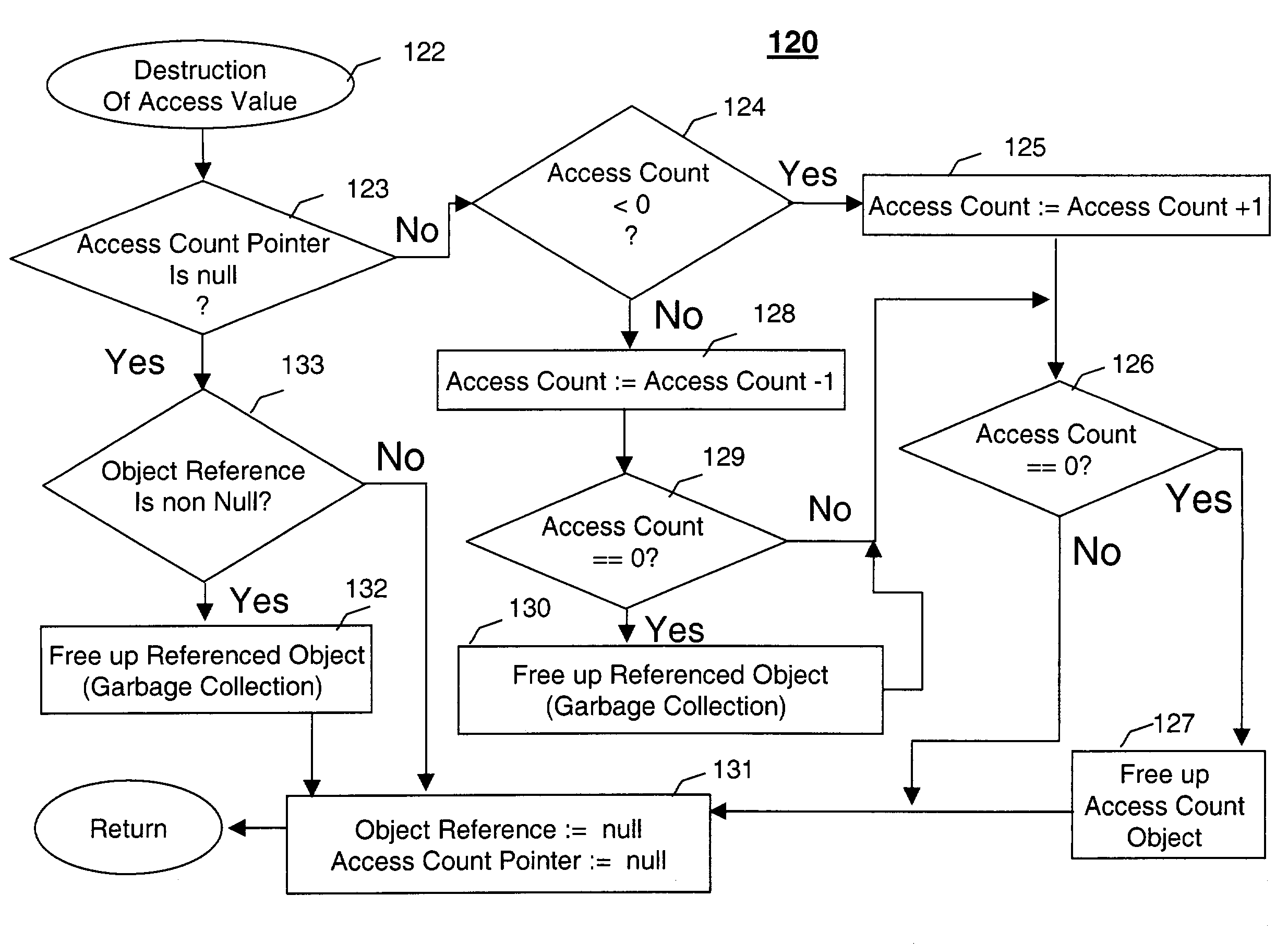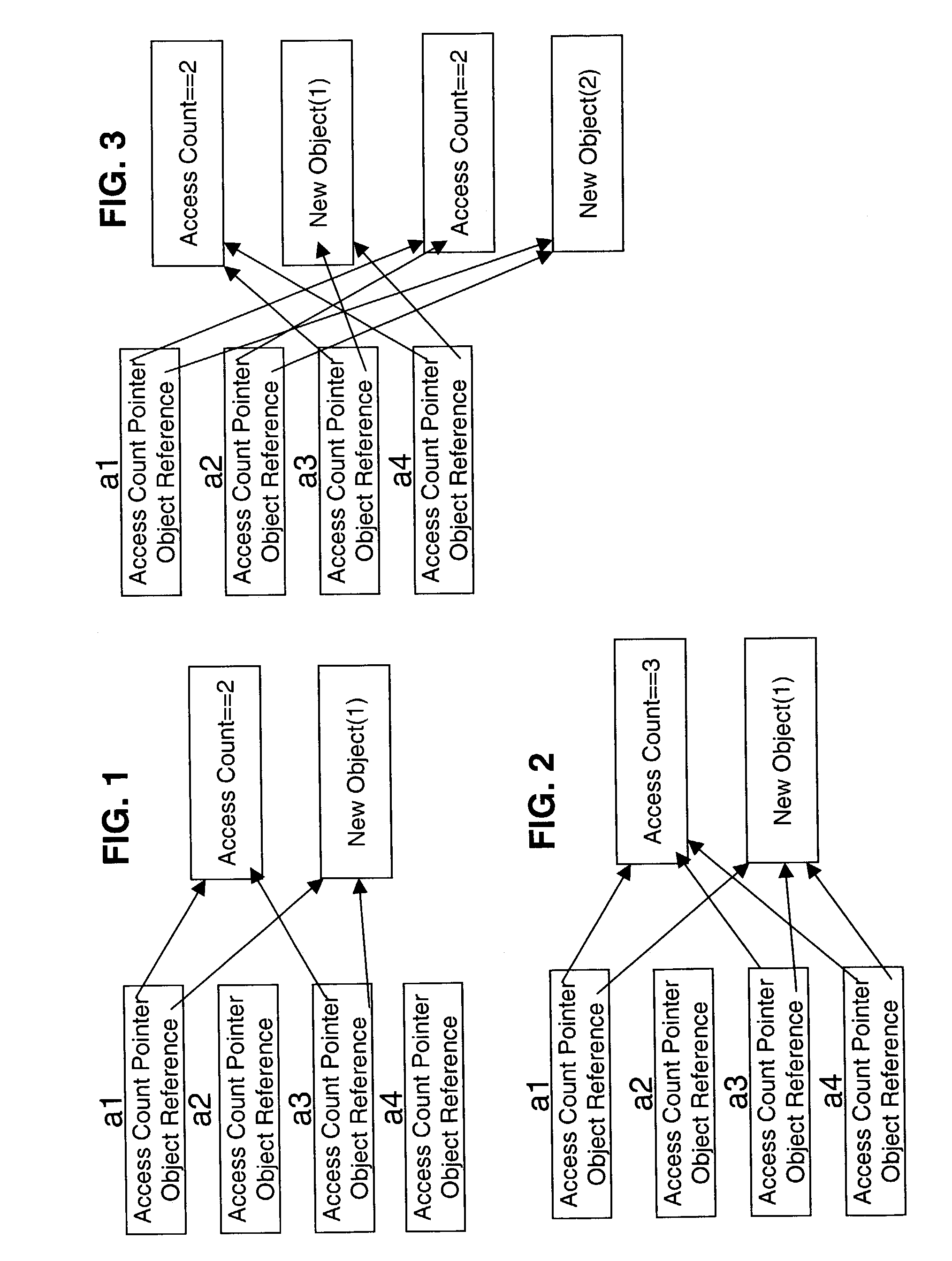Dangling reference detection and garbage collection during hardware simulation
a hardware simulation and reference detection technology, applied in the field of dangling reference detection and garbage collection, can solve the problems of insufficient scaling and composite types, ineffective existing techniques, and many runtime applications in practical terms useless when used in hdl simulation environments, and achieve significant performance benefits and efficient dangling reference detection of access values
- Summary
- Abstract
- Description
- Claims
- Application Information
AI Technical Summary
Benefits of technology
Problems solved by technology
Method used
Image
Examples
Embodiment Construction
[0028]Exemplary embodiments in accordance with the present invention provide a method, system, and apparatus for performing a dangling reference detection of access values as well as garbage collection of objects such as VHDL objects. In VHDL, an access value is like a pointer pointing to VHDL objects which if not freed up explicitly by a user could then result in memory leak and hence into “garbage.” Although the description and examples discussed herein are in the context of a VHDL simulation program, it should be understood that the present invention is not limited thereto and can be applicable to other hardware languages that support pointers and dynamic allocations as well. The concepts of the present invention in a broader sense are also applicable to any hardware or software programming language supporting pointers. The claims are also intended to cover high level software programming languages that support pointers and dynamic allocations. For example, embodiments in accorda...
PUM
 Login to View More
Login to View More Abstract
Description
Claims
Application Information
 Login to View More
Login to View More - R&D
- Intellectual Property
- Life Sciences
- Materials
- Tech Scout
- Unparalleled Data Quality
- Higher Quality Content
- 60% Fewer Hallucinations
Browse by: Latest US Patents, China's latest patents, Technical Efficacy Thesaurus, Application Domain, Technology Topic, Popular Technical Reports.
© 2025 PatSnap. All rights reserved.Legal|Privacy policy|Modern Slavery Act Transparency Statement|Sitemap|About US| Contact US: help@patsnap.com



